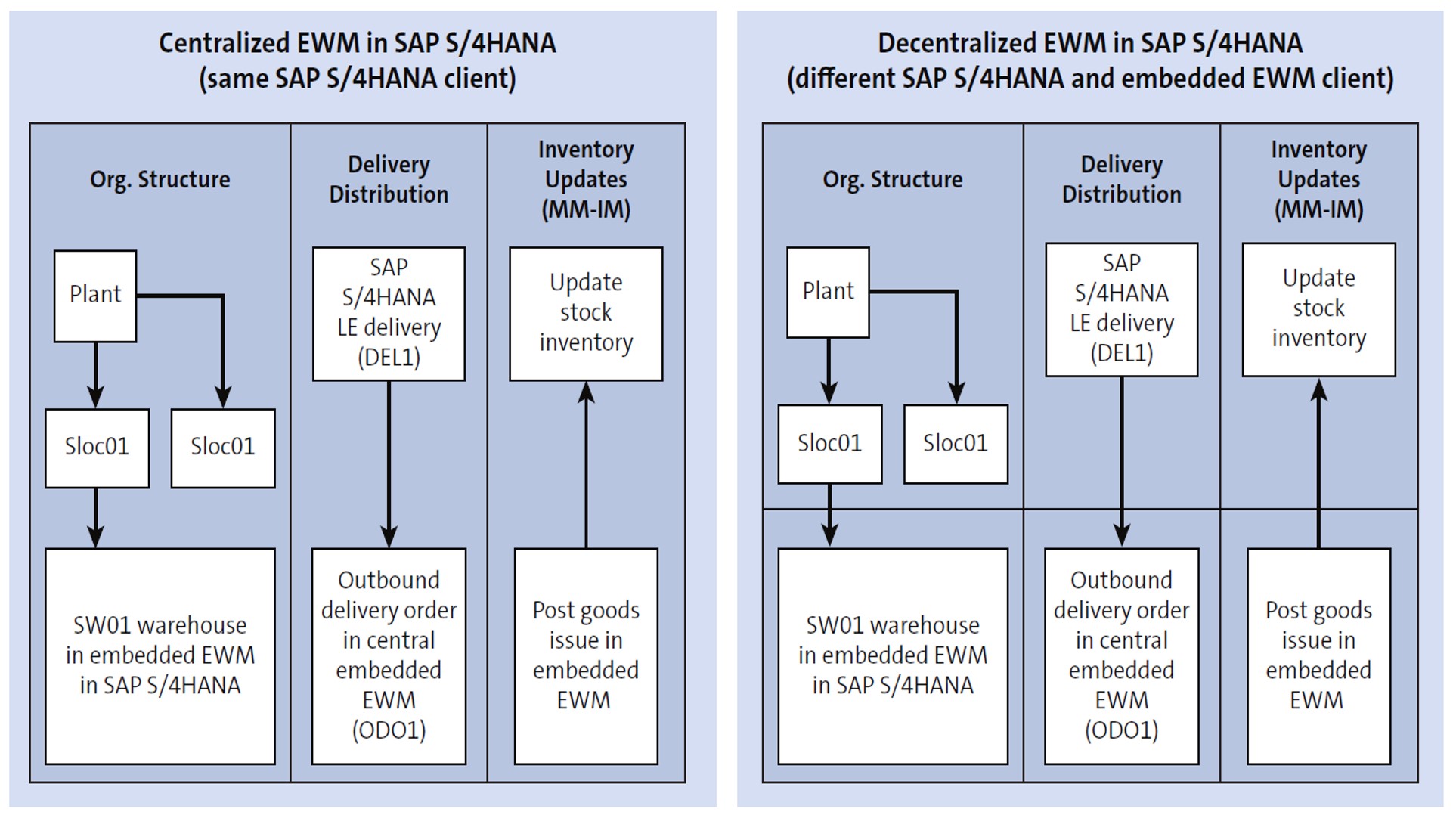SAP Extended Warehouse Management (EWM) is one of the leading warehousing applications available worldwide for enterprises both large and small in size.
SAP EWM first emerged as a successor to SAP Logistics Execution Warehouse Management (LE-WM), with added advantages and advanced features such as material flow system (MFS) and Labor Management. The earliest versions of SAP EWM were only available as separate, “standalone” applications until 2016 when SAP embedded the EWM functionality in the SAP S/4HANA suite.
By embedding EWM on SAP S/4HANA, clients could take advantage of the SAP HANA in-memory database and execute high-speed transactions for their warehousing operations. With each new version of SAP S/4HANA, more functionality was added to embedded EWM, including an ever-growing list of innovative SAP Fiori apps and a stripped-down version called stock room management.
With the latest version of SAP S/4HANA, 1909, there are many questions as to what one can do for their warehousing landscapes. Our book, Warehouse Management with SAP S/4HANA, covers both business and technical processes for embedded and decentralized EWM for version 1909.
Embedded EWM in SAP S/4HANA
Embedded EWM was released in SAP S/4HANA 1610 to allow customers to take advantage of the higher processing power of SAP HANA and lower the total cost of ownership compared to using standalone or decentralized EWM. As it currently stands, basic embedded EWM functionality is available to anyone with an SAP S/4HANA license, with advanced features available via an additional license.
Clients may choose embedded EWM for a host of reasons. For small- to mid-size customers, the basic functionality may be enough for their needs. For those with more advanced needs, the application of functionality to their specific business processes should be considered when choosing a license. But no matter which option is picked, those running embedded EWM benefit from ease of deployment and the lowered total cost of ownership. Why? Because they only need to maintain and use a single physical system rather than multiple physical systems as in case of standalone EWM.
A good number of embedded EWM implementations have already been done and clients have been happy with the outcome. Benefits listed by these clients include reduction in master data duplication, removal of additional transactional documents, and the use of advanced SAP Fiori apps available out of box.
For more details on SAP EWM deployment option best practices, see SAP Note 1606493.
Decentralized EWM in SAP S/4HANA
After SAP launched embedded EWM in SAP S/4HANA 1610, there were a lot of customers who realized that they wanted to use their existing systems but also embedded EWM features in another SAP S/4HANA physical server. The reasoning was this would ensure higher performance levels and warehouse business process continuity in case of any downtime.
To cater to such a requirement, SAP introduced a new deployment option known as decentralized EWM in SAP S/4HANA 1809, FPS 01. Prior to this version, embedded EWM used to share the same master data objects which were loaded as part of the same SAP S/4HANA instance and could not interact with the master data of other SAP ERP or SAP S/4HANA instances.
This was a disadvantage for the clients who wanted to run their SAP ERP or SAP S/4HANA system on a separate client than that of their embedded EWM application. With the new decentralized deployment, clients can take advantage of current and new innovations in embedded EWM but keep on using separate SAP ERP or SAP S/4HANA core systems.
With these updates, businesses can now connect multiple SAP ERP or SAP S/4HANA core applications to the same embedded EWM in an SAP S/4HANA system. This would reduce the cost of re-implementing the core ERP for each embedded EWM in SAP S/4HANA for their existing landscapes.
The deployment option and process flow differences between centralized and decentralized EWM on SAP S/4HANA are shown in figure below:

For more information on decentralized EWM on SAP S/4HANA, refer to the “What’s New Viewer - SAP S/4HANA” page. Details on how the customization can be done for this landscape can be explored using SAP Note 2775345.
Stock Room Management
In SAP S/4HANA 1909, SAP released a third deployment option for WM customers who do not use warehouse processes extensively, do not need advanced functionality found in SAP EWM, and would like to continue using the basic warehouse processes found in their existing SAP LE-WM applications. Called stock room management, this deployment allows customers to upgrade to SAP S/4HANA without performing a full-fledged WM transformation.
The various features of WM in SAP S/4HANA which can be utilized under stock room management exist in a number of groups: inventory management processes; outbound, inbound, and internal stock movement; physical inventory; and reports for stock data.
For more information on stock room management on SAP S/4HANA, refer to Marco Wahler’s blog post on SAP Community.
Conclusion
With the latest versions of SAP S/4HANA, SAP has provided various warehousing solutions which suit the needs of businesses of different sizes. This blog post provided a brief overview of these different warehousing landscapes for clients running SAP S/4HANA. Learn more about logistics with SAP S/4HANA here.
Looking to use the warehouse monitor? We have a free chapter excerpt on that.
This post was originally published 5/2020.



.png?height=600&name=Configuring%20LIFO%20Picking%20in%20SAP%20Warehouse%20Management%20(SAP%20WM).png)
Comments